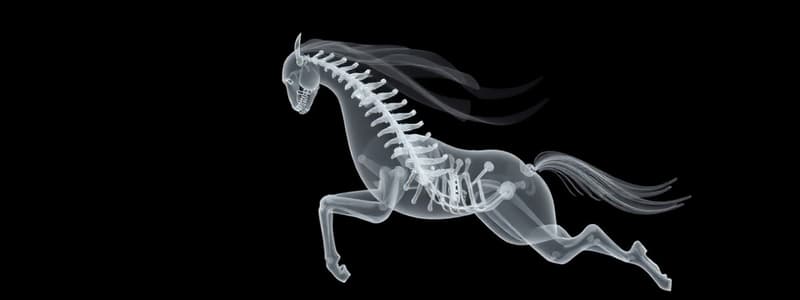Podcast
Questions and Answers
What type of motion is described when a car moves down a straight street?
What type of motion is described when a car moves down a straight street?
- Vibratory motion
- Linear motion
- Rotational motion
- Transition motion (correct)
Which of the following is NOT a valid frame of reference for determining motion?
Which of the following is NOT a valid frame of reference for determining motion?
- A fixed building
- Earth
- A cloud (correct)
- A stationary tree
What defines whether an object is in motion according to its frame of reference?
What defines whether an object is in motion according to its frame of reference?
- The speed of the object in relation to the observer
- The time of day when the observation is made
- The change of the object's location relative to a reference point (correct)
- The type of surface the object is moving on
In which scenario would you consider the children sitting in a stationary boat as being in motion?
In which scenario would you consider the children sitting in a stationary boat as being in motion?
What type of motion is exemplified by the Earth rotating around its axis?
What type of motion is exemplified by the Earth rotating around its axis?
Which statement accurately describes the relationship between motion and reference points?
Which statement accurately describes the relationship between motion and reference points?
What distinguishes vibratory motion from other types of motion?
What distinguishes vibratory motion from other types of motion?
Which frame of reference is appropriate for observing the motion of children sitting in a boat?
Which frame of reference is appropriate for observing the motion of children sitting in a boat?
When observing runners on a track, which of the following serves as an effective frame of reference?
When observing runners on a track, which of the following serves as an effective frame of reference?
In what situation would it be inappropriate to use clouds as a reference point?
In what situation would it be inappropriate to use clouds as a reference point?
Why is the Earth considered a constant frame of reference for most observations?
Why is the Earth considered a constant frame of reference for most observations?
Which of the following best describes transition motion?
Which of the following best describes transition motion?
How can the judgment of an object's motion be affected?
How can the judgment of an object's motion be affected?
Flashcards are hidden until you start studying
Study Notes
Motion
- Motion is the continuous change of an object's location relative to a fixed point.
- If an object changes its location, it has moved.
- There are many types of motion:
- Translational motion: Movement on a straight path, like a car on a road.
- Rotational motion: Circular movement around a central axis, like the Earth rotating.
- Vibratory motion: A back-and-forth movement, like a pendulum.
- We use a frame of reference to determine if an object is in motion.
- The Earth and objects on it, such as trees, streets, and houses, are commonly used as a stationary frame of reference.
- Moving objects with inconsistent velocity, like clouds, planes, or cars, cannot be used as a frame of reference.
- An object is considered in motion if its location changes relative to a fixed reference point.
- In a stationary boat, even if the boat is moving, people sitting on it are not in motion because their location relative to each other does not change.
- Runners are considered in motion because they change their location, relative to a fixed point, like a pillar or lines on the road.
- To determine if an object is in motion, we look at whether it changes its location with respect to a specific fixed point called a reference point.
Motion
- Motion refers to the continuous change in an object's location relative to a fixed point.
- If an object moves from one place to another, then it is considered to be in motion.
- Different types of motion exist: translational (e.g., car movement on a straight road), rotational (e.g., Earth's rotation around its axis), and vibratory (e.g., pendulum movement).
- Our primary frame of reference is the Earth and everything on it, including trees, streets, and houses. This is because we consider the Earth to be relatively stationary.
Frames of Reference
- Objects with constant velocity, like clouds, moving planes, or a moving car, are not suitable as frames of reference.
- Objects that are stationary relative to the frame of reference are considered at rest (e.g., kids sitting on a boat).
- Objects that are changing their location relative to the frame of reference are considered to be in motion (e.g., runners).
- Determining an object's state of motion (at rest or in motion) depends on whether it changes its position relative to a reference point.
Reference Point
- A reference point is a fixed point used to determine whether an object is in motion or at rest.
- The reference point is considered stationary relative to the chosen frame of reference.
Studying That Suits You
Use AI to generate personalized quizzes and flashcards to suit your learning preferences.




